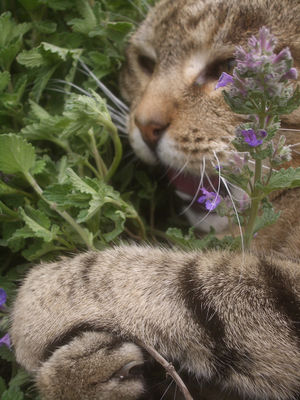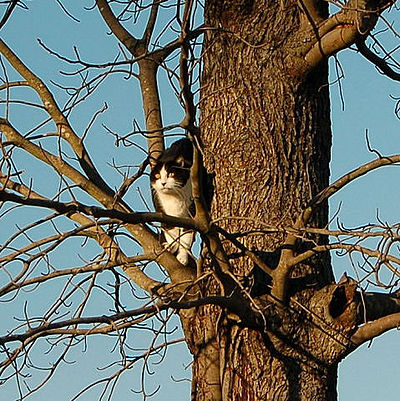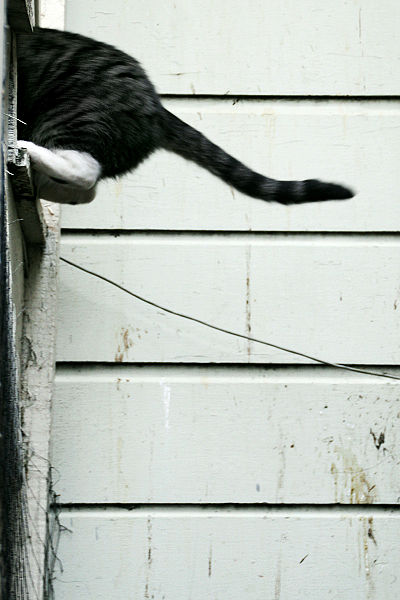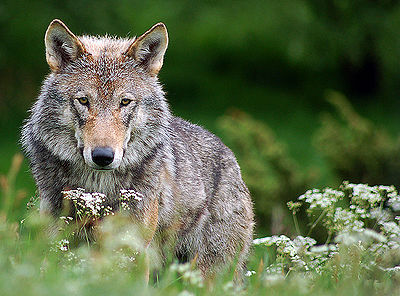New DNA evidence seems to point to the fact that both dogs and wolves have evolved from large wolf-like canines that have been extinct for thousands of years. This could mean that while they are related, the dog’s ancestor is not the wolf. Dogs have been domesticated for thousands of years. They’ve been bred by […]
Biology

How do Chameleons Change Color?
The more than 100 kinds of Chameleons can change color, usually between brown, gray and green. But some have the ability to change to almost any color. And they can perform this feat in 20 seconds. Chameleons can be found in northern Africa, the Middle East, India and Madagascar. Chameleons have special cells in layers […]

How Does Catnip Work?
The catnip plant is a member of the mint family. Its scientific name is “Nepeta Catria.” The plants native growing regions are Europe, Asia and Africa. Settlers coming to North America brought the plants with them where it found the soil to its liking and has been growing like a weed since then. Catnip is […]

Can Veterinary Research Find a Cure for Viruses
Associate Professor of Microbiology at the University of Pennsylvania Veterinary School of Medicine, Dr. Ronald Harty and his team are researching viruses and their molecular traits. They are working towards reducing and/or eliminating their ability to spread infection. Viruses such as Ebola do not reproduce by themselves but by a process called “budding”. These viruses […]

Can Animals Sense Disasters?
Animals are certainly more attuned to their environment than people are. But do they really sense disasters before they occur? Experts, as they often do, disagree. Before hurricanes, earthquakes, tsunamis, tornadoes, storms, many animals head for the woods and forests where they feel safest. During thunderstorms, lightning flashes produce nitrogen oxides and the smell produced […]

Do Cats Always Land On Their Feet?
Contrary to popular belief, cats don’t always land on their feet. If cats fall a short distance, they can usually right themselves and land on their feet. They have very small collarbones which allow them to fit through small spaces and their backbones are very flexible, more so than other animals. Their spines have about […]

What Your Dog’s Tongue Tells About Health
The tongue is not a large organ, but of course a very important one. It is made of muscle, connective and fatty tissue, blood vessels and nerves. There are small, mushroom-shaped protrusions called papillae that cover the top of the tongue and aid in tasting. A dog’s tongue has many uses besides tasting food and […]

Do Pets Have Good Memories?
In general animals do have good memories. You probably remember that old saying about having a memory like an elephant. A pet’s associative memory is long term. It’s when the pet has a positive or negative memory associated with something they hear, smell or see. Real or short term memory lasts about 5 minutes for […]

Preening
Contents 1 Why Birds Preen 2 How Birds Preen 3 Preening Your Bird 4 Video Why Birds Preen Both domestic and wild birds engage in preening several times a day. Preening is a process where birds remove dust, dirt and parasites from their feathers and align each feather in the optimum position relative to adjacent […]

Why Do Animals Have Tails?
Animals have tails for several reasons, including balance, communication, navigation, and defense. Some animals like monkeys have tails that help them grab onto tree limbs for climbing and sometimes to grab food. Farm animals such as cows, sheep, horses and goats swish their tails to keep flies away. Horses that have their tails cut lose […]

